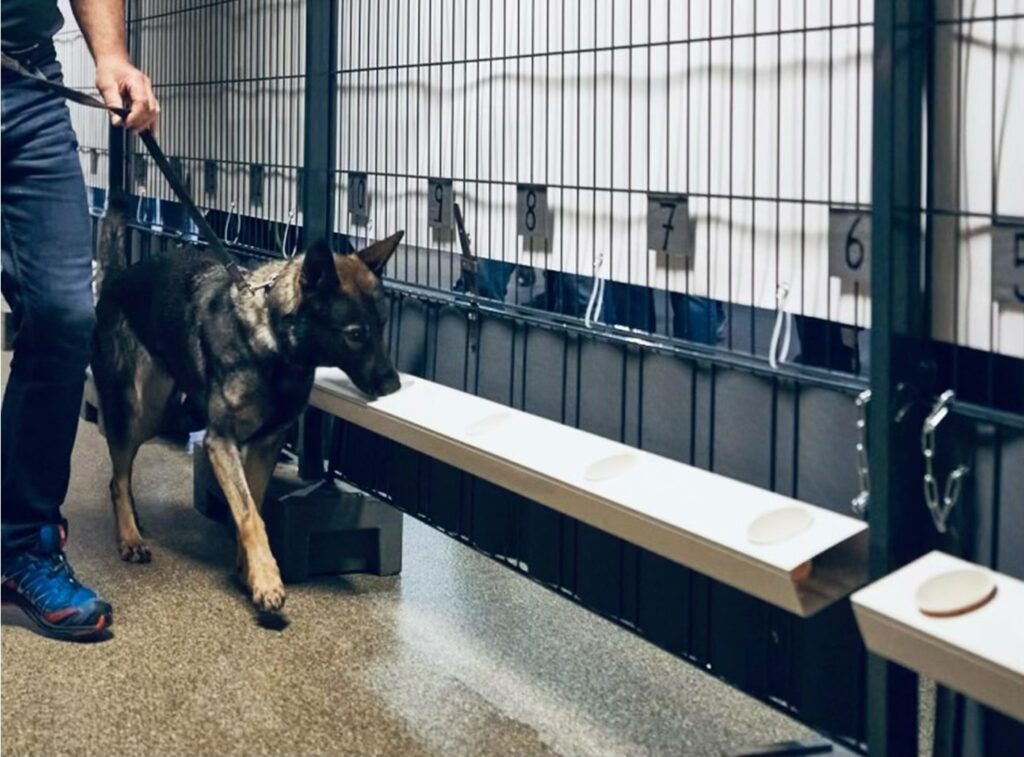
After experiencing canine COVID-19 screening at concerts, participants have reported increased trust in detection dogs, positioning them as a fast and reliable tool for safer mass events. This development comes amid ongoing efforts to find practical solutions for large gatherings during the pandemic.
In a recent study published in the journal Frontiers in Public Health, researchers explored the feasibility of using medical detection dogs for COVID-19 screening at concerts in Germany. The study specifically examined public perceptions of different testing methods for SARS-CoV-2, with a focus on canine detection.
Study Insights: Canine Testing vs. Traditional Methods
Participants in the study expressed a preference for canine testing over traditional antigen or polymerase chain reaction (PCR) tests. Initially, there was a preference for sweat samples before concerts, but support shifted towards direct sniffing by detection dogs after the events. Despite this shift, sweat sampling remained a practical and privacy-conscious option for many, especially those with allergies or fear of dogs. However, the use of dog-based testing in schools was less favored, with 51.86% of participants opposing it.
The study comes in the context of the COVID-19 pandemic, which has significantly altered social and cultural life worldwide. In Germany, lockdowns starting in March 2020 halted public gatherings, including concerts and sports events. To curb viral spread and facilitate a return to normalcy, various testing methods were introduced alongside vaccination efforts.
The Role of Detection Dogs in Pandemic Response
While PCR tests are considered the diagnostic gold standard due to their high sensitivity and specificity, they are costly and time-consuming. Rapid antigen tests, though more accessible, often yield less accurate results, leading to confusion. In response to these challenges, innovative diagnostic approaches have emerged, including the use of medical detection dogs. These dogs demonstrated strong accuracy in the concert study, with sensitivity rates between 82–85% and specificity over 99%. They could even distinguish SARS-CoV-2 infections from other respiratory diseases, making them a promising, cost-effective, and scalable solution.
Public Opinion and Future Implications
The study aimed to assess public opinion on canine-based SARS-CoV-2 testing at large events, focusing on its acceptability, feasibility, and potential role in future pandemic preparedness. Participants attended concerts where they provided sweat samples screened by trained detection dogs. Only those with negative results were admitted. A total of 2,802 individuals attended the concerts, and extensive surveys were conducted before and after the events to gauge perceptions.
Key findings revealed that before the concerts, 39% of participants preferred canine sweat-sample testing, 32% favored direct sniffing, 21% opted for PCR, and 9% chose antigen tests. Post-concert, preferences shifted to 40% for direct sniffing, 32% for sweat-sample testing, 23% for PCR, and just 2% for antigen tests. Confidence in PCR tests remained high, while perceptions of canine testing improved significantly.
“Initially, 59% of respondents rated dogs as reliable or very reliable, but this rose to almost 90% after the concert. Suitability ratings also increased, with nearly 95% of participants deeming dogs appropriate for COVID-19 detection after experiencing the entry procedure.”
Support for deploying detection dogs was strong in high-traffic areas such as airports, train stations, and large cultural or sporting events. However, opinions were divided regarding their use in sensitive settings like schools, hospitals, and nursing homes due to privacy and vulnerability concerns.
Conclusions and Broader Context
This study underscores the growing public support for medical detection dogs as a COVID-19 testing method, especially after direct experience at concerts. Acceptance and trust in canine testing increased, with many participants favoring it over antigen-based tests, whose credibility declined post-event. While PCR testing remains the ‘gold standard,’ canine methods are seen as faster, less costly, and practical alternatives, particularly for large gatherings.
Researchers highlighted the potential for canine testing in high-traffic settings, though acceptance was lower in private or sensitive environments. They also noted the importance of sweat sampling as a practical approach balancing efficiency, privacy, and participant comfort.
The study’s real-world evaluation offers valuable insights into how firsthand exposure influences public opinion. However, the sample of concert attendees, already informed about the testing approach, may limit broader generalizability. Overall, canine testing shows promise as part of pandemic preparedness, complementing traditional methods. Standardized protocols and supportive regulations will be essential for scaling up their use and ensuring long-term public confidence.







